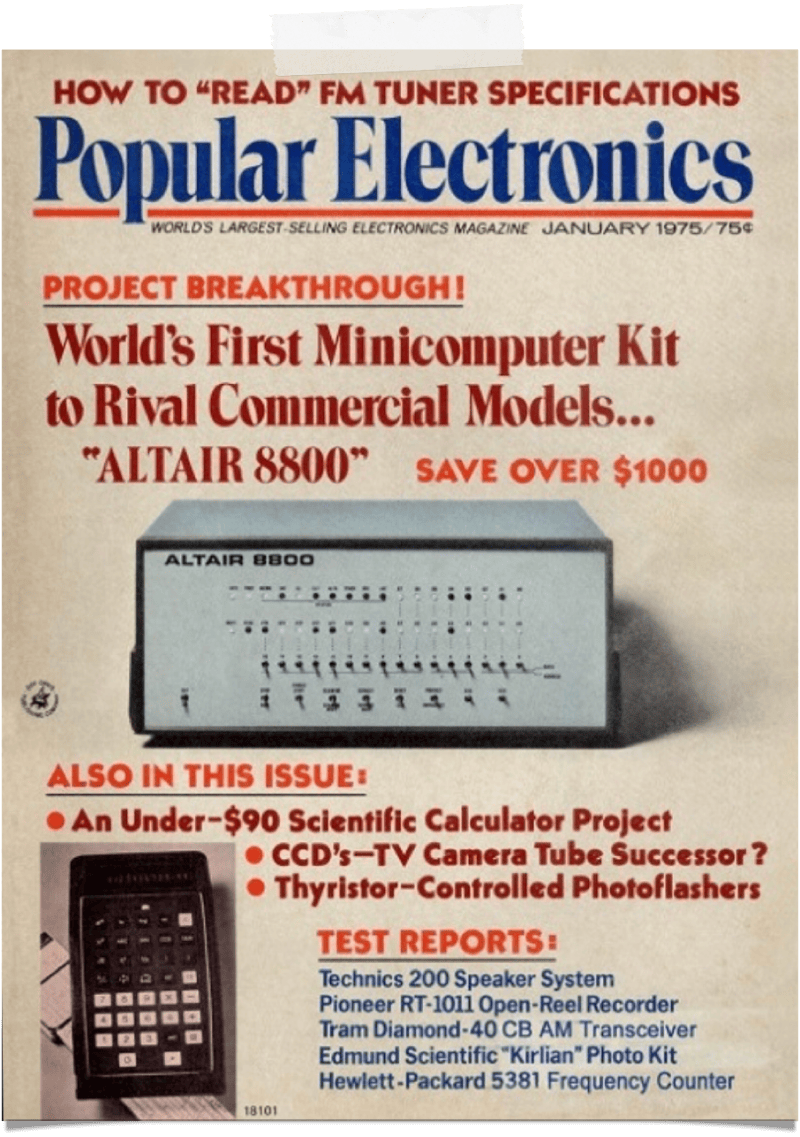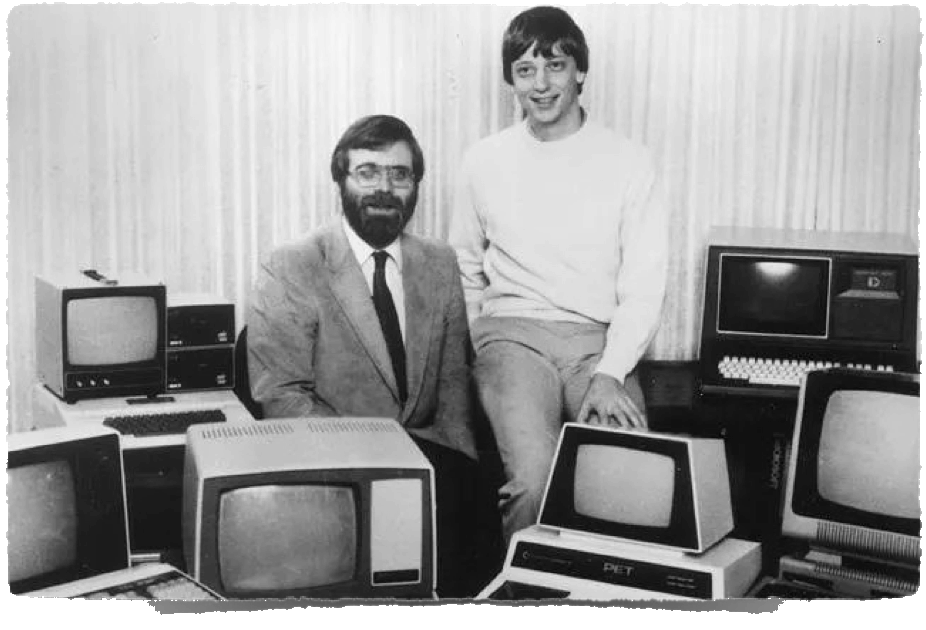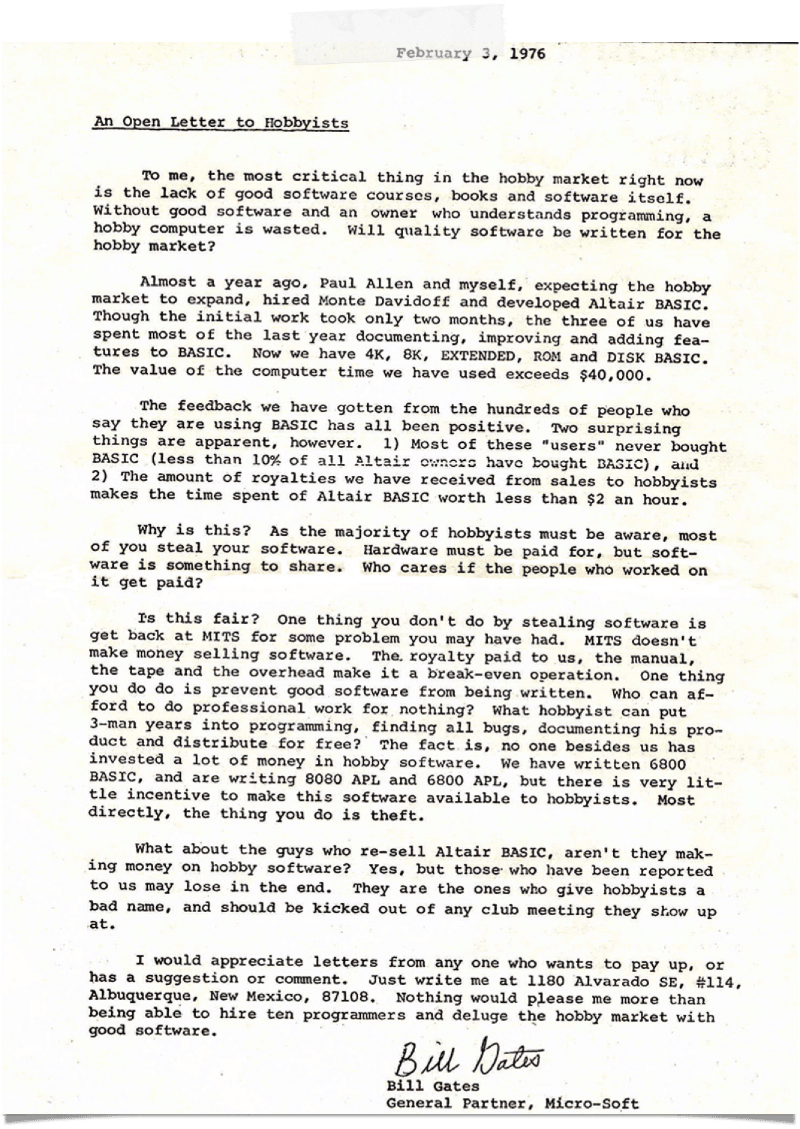BASIC Heydays

The Magazine that caused excitement for computer hobbyists and programmers over the Altair 8080. [Source: PC Magazine, article, 2014]
In 1975, a computer called the Altair 8080 was released. Marketed towards hobbyists, it was one of the first personal computers. It created much excitement for hobbyists, but for young programmers Paul Allen and Bill Gates, it was also a huge opportunity. They decided to sell a BASIC interpreter for the Altair. After months of development, Allen and Gates made their first deal licensing a BASIC Interpreter to the Altair’s manufacturer for their system. In this way, Micro-Soft (now Microsoft) was born.
Their product, called Altair BASIC, received highly positive feedback. But when Bill Gates realized that the vast majority of the users received a pirated version instead of paying the $150 licensing fee, he was enraged. He responded with the famous “Open Letter To Hobbyists”, deeply criticizing their methods of sharing software—which he called stealing—and claiming their refusal to purchase it discouraged programmers from writing quality software.
Following the “Do-it-yourself” ideology, the hackers and hobbyists retaliated by deciding to create their own version of BASIC. Although it was a success, it seemed like Micro-Soft had won the battle over the market. Companies raced to create their own versions of BASIC as personal computers spread rapidly—many failed and turned to Micro-Soft to do it for them. Easy-to-learn BASIC became the “de facto” language of personal computing; what was the point of a computer if you couldn’t program it to your needs and desires?
At this point, the control Kemeny and Kurtz had over the language was long gone. Companies like Apple, Commodore, and Atari leveraged the powers of BASIC, with the language itself often being the main framework of a computer—BASIC became the face of personal computers. For the rest of the 1980’s, BASIC was the #1 language—and, in the eyes of the average American, the only programming language. It could be found in schools, homes, and businesses across the country.




